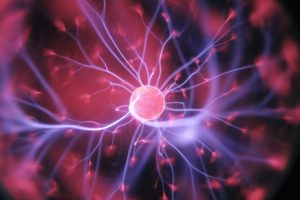 LIV Fitness in Livermore, CA, helps people build muscle mass by using science-backed methods. You’ll get stronger if you lift heavy things, but there’s more to building muscle than that. If you want to build muscle mass, it takes a different approach than it does to build strength. Knowing that difference is key. How much weight you lift, the number of repetitions, and your form is also important are also important. If you lift wrong, you can strain muscles and live in pain for months. Lifting without using scientific techniques can bring progress, but it will be slower than what you get from the best methods.
LIV Fitness in Livermore, CA, helps people build muscle mass by using science-backed methods. You’ll get stronger if you lift heavy things, but there’s more to building muscle than that. If you want to build muscle mass, it takes a different approach than it does to build strength. Knowing that difference is key. How much weight you lift, the number of repetitions, and your form is also important are also important. If you lift wrong, you can strain muscles and live in pain for months. Lifting without using scientific techniques can bring progress, but it will be slower than what you get from the best methods.
Decide whether you want to build mass or strength.
You can do both, but it waters down the results of each selection. Bodybuilders may look more powerful, but they aren’t as strong as people who train for powerlifting. Training too frequently or for too long is another potential pitfall. There are differences in the amount of weight you lift and the number of reps you do for strength and hypertrophy—building bigger muscles. The rule of thumb is that you increase by three to five repetitions at heavy loads for building strength and six to thirty repetitions at somewhat lighter loads for building more muscle mass.
You increase the load for building strength and reps for building muscle size.
You can increase load or increase repetitions to build muscle mass and strength. The difference occurs in which is best for each one. To build more strength, adding more weight is best. For muscle mass growth, you increase the number of repetitions adding less weight to the load. Instead of adding 15 pounds to the lift and no repetitions, you add 15 repetitions and two to five pounds, just enough to keep it more challenging but not exhausting.
What you eat can determine your success.
You won’t get the results you want if you don’t have adequate building blocks. Diet makes a difference. Having a healthy carb-protein snack a half hour before a workout and one immediately following it can also help. Before a workout, it gives you the energy to do your best and afterward, it jump-starts recovery.
- The recovery period for building muscle mass is shorter than for building strength. A personal trainer can guide you through the right types of exercise, weight loading, and number of reps for each.
- Power trainers use fewer types of exercises to build strength. Increasing the variety of exercises helps build muscle mass and increases overall muscle development. Push and pull-style exercises are both necessary.
- Using compound exercises can help build muscle mass faster. Squats and lunges are examples. They work the hips and knees. Leg extensions aren’t an example because they only work the knee joints.
- Taking moderate rest periods between intervals of about a minute to a minute and a half is optimal for building muscle mass. If the rest is less than 30 seconds, it doesn’t allow enough time to regain strength. Longer than three minutes reduces the stress necessary for muscle growth.
For more information, contact us today at LIV Fitness
